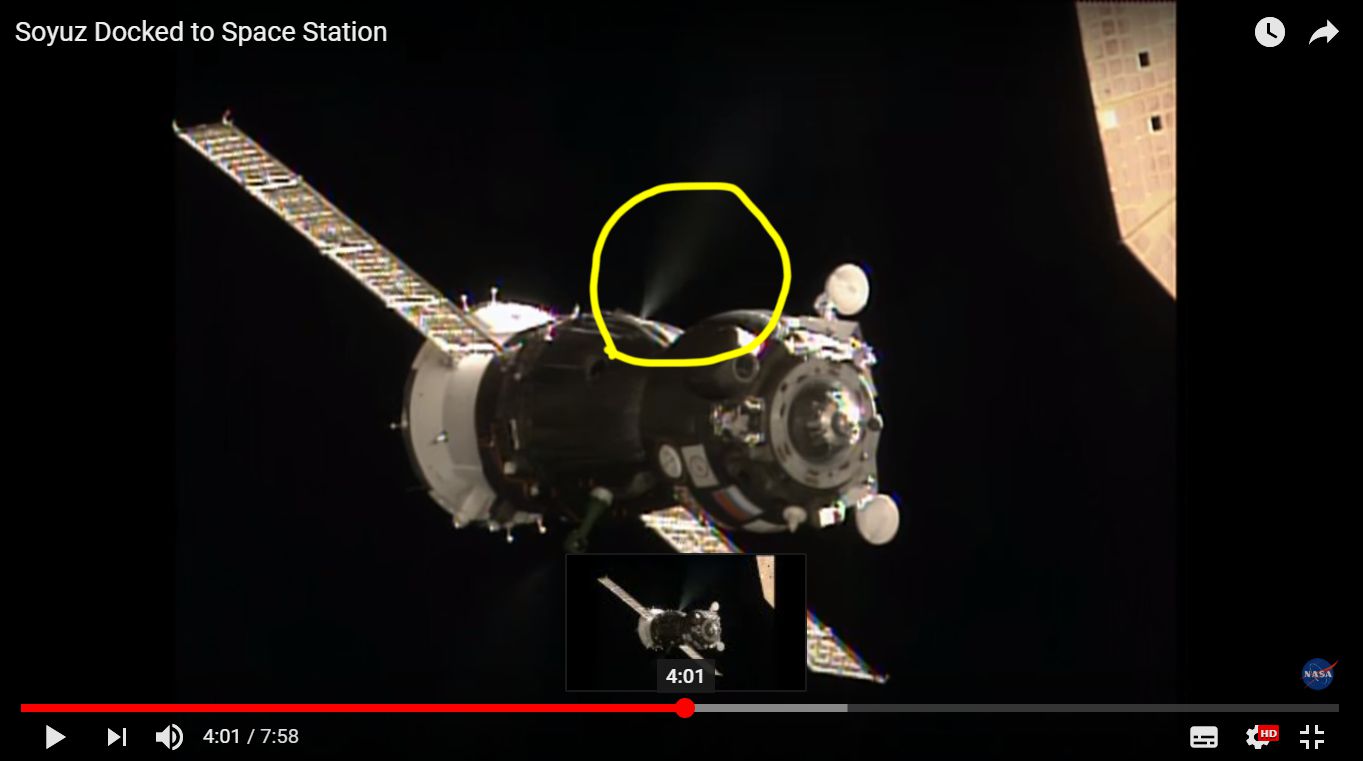On videos of Soyuz docking to ISS we can see exhaust from the control engines (if background is dark enough). For example here
Soyuz TMA-19M docked to ISS at December 15 2015. Exaust plume is circled at screenshot:
The textbook chemical formula of the NDMH and nitrogen tetroxide reaction is:
H2NN(CH3)2 + 2*N2O4 -> 2*CO2 + 3*N2 + 4*H2O
My question is:
How are visible ice crystals are forming in the exhaust? The molecules of exhaust products should be too hot and moving too fast... Or any other products occur in the reaction?
Also I wonder about the contamination of spacecraft by hypergolic exhaust products. The Hubble telescope has no reaction engines because of this concern. The ISS has limitations for use of reaction engines in close proximity. But if exhaust products are nitrogen, carbon dioxide and water - can they cause a long-term contamination, not just icing? Or they can react with metals because of their high speed?
EDIT
I have read "Rocket propulsion elements" by Sutton and Biblarz (google "rocket propulsion elements pdf"). A lot of interesting info, including chapter 18 about exhaust plumes. But not so much for my question.. About contamination of spacecraft the book only mentions "hydrazinum nitrate and other materials were found".
So, to reformulate the question:
- What are the visible products of reaction engines' exhaust in the video? I suppose they should be in solid or liquid phase, because a gas could not scatter enogh light.
EDIT 2
Summarised some points in self answer


